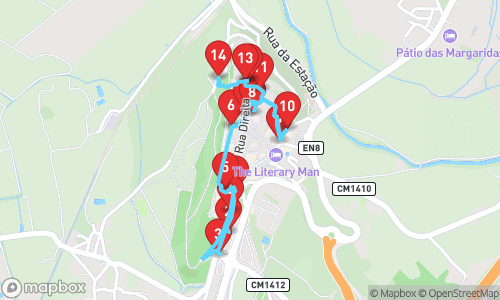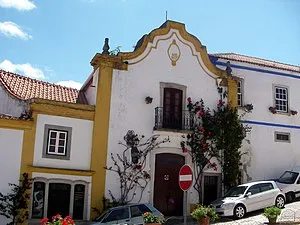
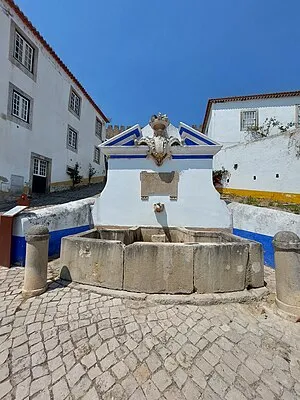
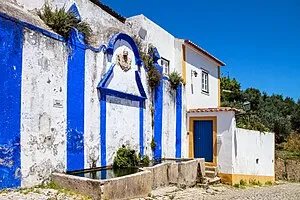

Historic Charm: A Journey Through Medieval Óbidos

Tour Guide
Jenny Multilingual
Welcome to Óbidos! On this GPS guided audio tour, we will visit 9 stops on a route of 0.96km. This tour focusses mainly on general tourism.
Locatello is an app where you can generate personal audio guided tours. Set your preferred distance, guide, language and theme, and a guided tour is created on the spot.
Walking Time
Distance
stops
Language
Tour Stops

Convento de Jesus, Maria, José

Chafariz do Poço
A Baroque fountain built by Queen Maria I in 1792, featuring a curvy wall topped with ornate weapons, a simple spout (currently non-operational), and a tank with straight and curved lines, flanked by two pillars.

Chafariz da Biquinha
A Baroque-style fountain, dating back to 1856, features two symmetrical bodies separated by a pilaster, a U-shaped tank, and a drinking fountain, along with a central pediment adorned with royal arms.

Igreja de Santa Maria de Óbidos
A cultural heritage monument, the Igreja de Santa Maria de Óbidos features Manueline, Renaissance, Mannerist, and Baroque elements, reflecting architectural styles from successive periods.
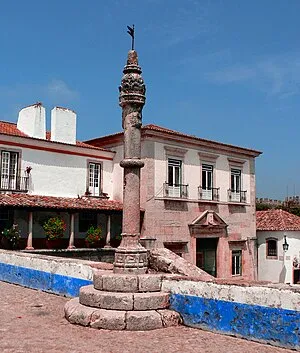
Pelourinho de Óbidos
A cylindrical limestone structure, classified as a National Monument since 1910, served as a point of justice application in the Middle Ages.
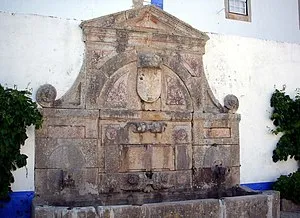
Chafariz da Vila
A Mannerist back-mounted fountain built in the 2nd half of the 16th century, features limestone and pink marble, with a triangular pediment topped by a double cornice and features a coat of arms of Queen D. Catherine of Austria.
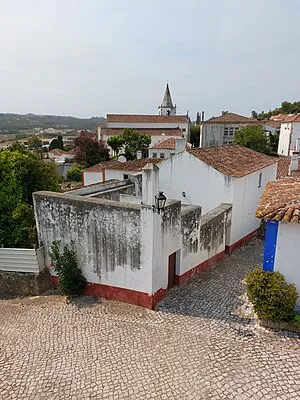
Sinagoga de Óbidos
A historic building, allegedly the former synagogue, features Gothic doors and windows, albeit 20th-century additions. Its original purpose was for Jews to meet and "pray in Hebrew" in the Jewish Quarter, erected between the 14th and 15th centuries.
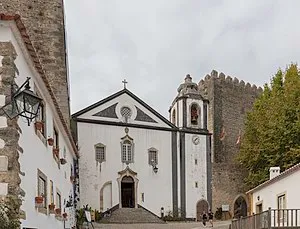
Igreja Paroquial de Santiago
A 12th-century church built by King Sancho I in 1186, rebuilt after earthquakes in 1531 and 1755, and now housing a bookshop. The church has a single nave with two side chapels and a vaulted ceiling, featuring valuable paintings.
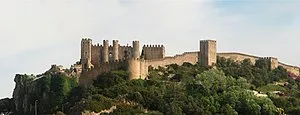
Castle of Óbidos
The Castle of Óbidos is a historic fortress with Roman and medieval roots, featuring fortified walls, towers, and a complex history of occupation, siege, and restoration from Roman times to the 19th century.
Audio Preview
30 secDownload App
Experience this tour and many more with our mobile app. Available for iOS and Android.
Audio Preview
Tour Map
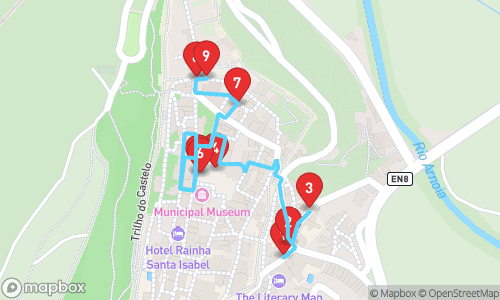
Quick Facts
- ✓GPS-guided navigation
- ✓Professional audio narration
- ✓Offline maps available
- ✓Free to try
Why Choose This Tour
Expert Local Guide
Narrated by Jenny Multilingual, specializing in general tourism
Flexible Timing
Take the tour at your own pace, any time of day
